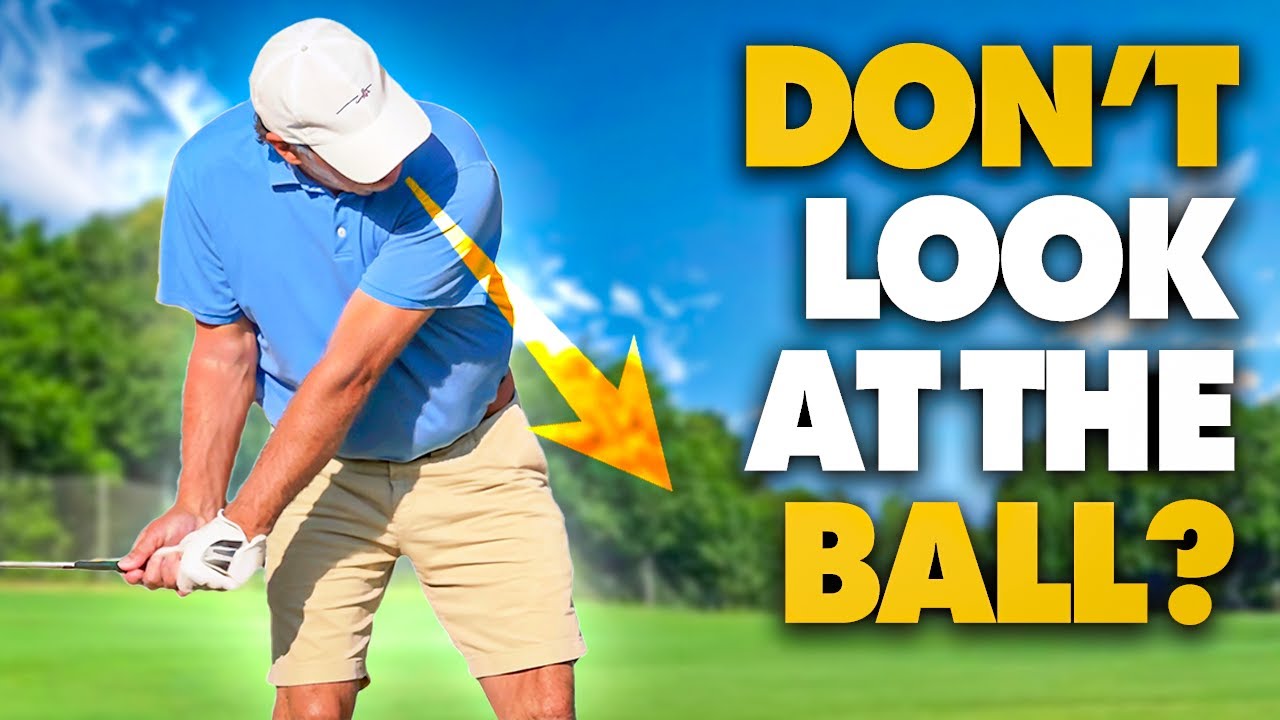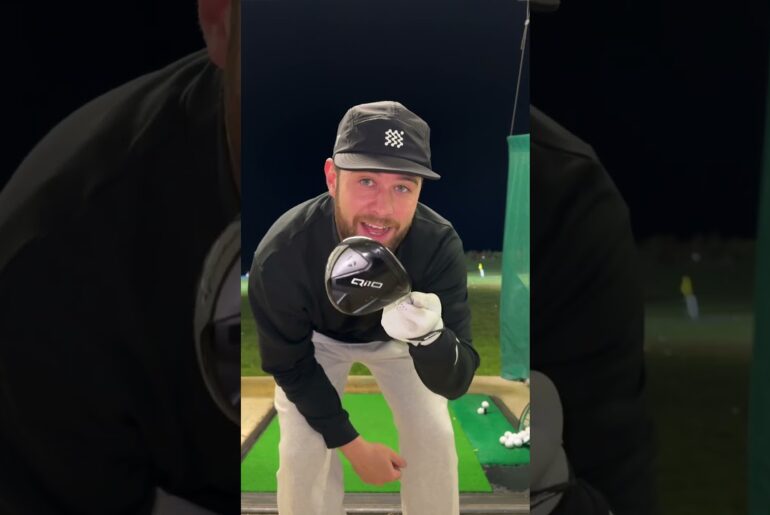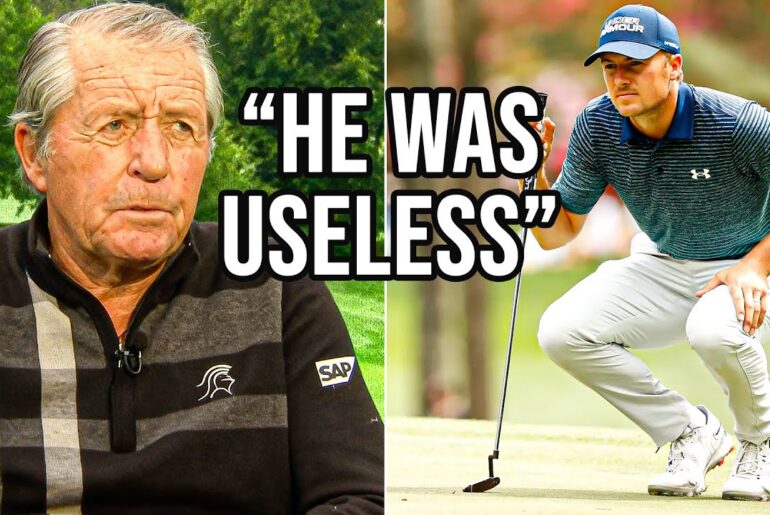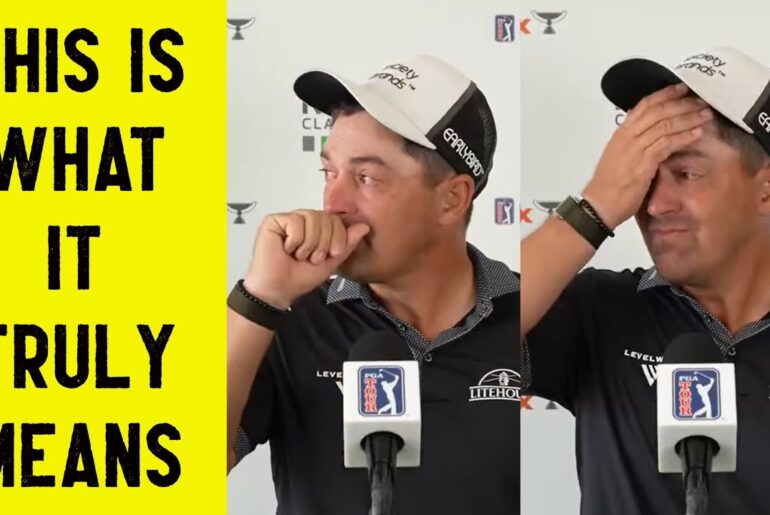Is “stay down golf” advice hurting your game? This FlightScope test reveals the shocking truth about golf eye on the ball vs. early release! Learn when golf keep your head down helps and when it actually costs you distance and consistency. Email me here greg@gregjonesgolf.com
Follow Me On Instagram https://www.instagram.com/gregjonesgolfofficial?utm_source=ig_web_button_share_sheet&igsh=MTZpb2NwN2hyOGNuNw==
👀 0:00 – Introduction: Can You Spot The Difference?
⚡ 1:11 – Peak vs. No Peak: Which Is Right For You?
🏆 1:31 – Tour Pros Who Release Early (Duval, Sorenstam, Stenson)
✅ 2:06 – Benefits of Early Head Release (Speed, Injury Prevention, Fade)
👁️ 4:47 – Benefits of Eyes Down Post-Impact (Square Face, Draw)
📊 6:36 – FlightScope Test #1: Early Head Release Results
📉 8:38 – FlightScope Test #2: Eyes Down Post-Impact Results
🎯 10:11 – Training Drills: Follow The Ball vs. Left Foot Only
📋 12:19 – Final Summary: Peak or No Peak
Stop blindly following “stay down golf” advice! PGA instructor Greg Jones tested both methods with FlightScope to reveal the real numbers. Early head release (used by David Duval, Annika Sorenstam, Henrik Stenson) averaged 169-yard carry with 1.1° left path—creating fade bias, faster speed, and injury prevention by clearing space for arms to swing through. The golf eye on the ball method (eyes down post-impact) produced 162-yard carry but 3 yards more roll, with face 3.4° left of target—proving it squares the clubface better for draws. Neither is wrong! The data shows early release creates left-oriented path for fades and prevents left shoulder impingement, while golf keep your head down helps square the face and prevents standing up early. Choose based on your ball flight needs and tendencies.
What You’ll Learn:
-Why tour pros like David Duval, Annika Sorenstam, and Henrik Stenson release their head early
-The “top down” opening sequence: head releases first, then shoulders, midsection, and hips follow
-How early head release creates clean space for arms to swing faster through impact
-Why staying down too long can cause left shoulder impingement surgery (instructor’s personal experience)
-How early release helps you get off your backside instead of hanging back
-Why releasing early creates left-oriented path for fade bias and prevents hooks
-Eyes down benefits: better face squaring, crossover release, prevents standing up
-The baseball coach principle: 200% better chance of hitting it if you’re looking at it
-FlightScope data: early release = 169 carry, 1.1° left path, square face
-FlightScope data: eyes down = 162 carry, 1.6° left path, 3.4° closed face (more draw spin)
-“Follow the ball with your eyes” drill for training early head release
-Left foot only drill for training eyes down post-impact technique
#StayDownGolf #GolfEyeOnTheBall #GolfKeepYourHeadDown #GolfHeadPosition
Hey, you ready? Watch these two swings. Did you see a difference? Well, if you did, you were looking in the right place and you get a big fist bump from me. Yes. The answer was right here in the hat. Did you notice how my hat stayed down with the first one and then I released it early with the second one? Well, that’s what today’s topic is. To peak or not to peak. Very interesting video. We’re going to go through these two moves, pluses and minuses. We’re even going to get some flight scope data to show you what the difference is in the ball and the path and the face when you release your head early or whether you stay down post impact. Hi, my name is Greg Jones and welcome to the channel Finish First. I’m the director of instruction here at Steelwood Country Club in South Alabama. And today I’m in the learning center at the back end of the range here at Steelwood Country Club. And this is where I do my thing. If you want to work with me, hit me up at gregregjonesgolf.com. I used the coach now app. And if you want to come see me in person, well, come on down to LA, lower Alabama as we say, and see me so we can work on your game, get you more consistent so you too can finish first. Should you peek and release your chin and release your eyes and head a little bit early before impact or should you no peak and stay down and leave your eyes and head down until post impact? I don’t think either one is wrong. It’s just a matter of which one’s right for you. So let’s talk about Topi, David Dval, Anukica Sorenam, Henrik Stinson, Joe Durant to name a few. David Dval won majors. What a great player. Anukica Soren Stam, best female player ever. Henrik Stinson won a major, great player. And then how about Joe Durant? If you don’t know Joe Durant and his stats, he was like top three in ball striking year after year after year in the prime of his career. Nobody hit it better than Joe Durant for about five, six, seven years. So, all four of those golfers released their head and chin a little bit earlier. All right, let’s talk about the benefits of releasing your head pre-impact before you strike it and getting your eyes and your chin down range a little longer. Why would anybody want to do that? Well, for one, you get to open the swing. You get to open up from the top down. Now I’m opening up here with my chin, my face, my head, and my shoulders beginning to open up because my head’s opening up. Then the midsection is opening up, and then the hips are opening up. So, I’m getting everything out of the way, which is going to create this beautiful clear space for me to swing my arms. I have lots of room to swing. Well, when I have lots of room to swing and there’s a there’s a clean area down here, I can go fast. It just see feels faster. I feel like that club can just zip through there if my body’s not in the way and I’ve already taken it to the left. My shoulder, my hip, and my head opening up soon gets everything out of the way. Another reason you might want to do that is injury prevention. You don’t want to get in here and get this too much. You don’t want to get this high left shoulder because you’re trying to stay down too long. Well, I’ve had that surgery and it’s not pleasant. I’ve had it opened up and had my clavicle shaved down and that’s from years and years of hitting balls and getting this left shoulder up because I was trying to stay down and hit a draw. And so that’s uh another good reason. Another good reason is if I clear out and I open this space to swing right here, it gets me off my backside. It gets me off my backside because if I’m somebody who stays down in here too long, I might not ever get off this backside. I left a lot of weight and mass and energy behind because I wanted to stay behind and try to square the face too much. So, it gets you off your backside. And finally, another great reason is it helps you hit a fade. It helps to hit a fade. And so, I know for me, I don’t ever want my ball to hook. I don’t want it to turn left unless I want it to turn left on purpose. Okay? So, if I can get everything out of the way and I start from the top down, head releasing, shoulder getting out of the way, midsection and hip getting out of the way, that clears the path for me to swing the handle to the left a little bit and get me more of a left oriented swing path so I can hit a fade. That’s pretty much what my ball does. So, a lot of benefits to releasing your head and getting out of the way and creating this space so you can go fast, get off your backside, hit a fade or not a hook if you want to and prevent injury. All right, let’s talk about the benefits of staying down and keeping your eyes down post impact. Eyes down post impact. Well, the first benefit is it gets the club face square. It helps to get the club face square. If I stay down here, those arms are going to come down and go right on by. And I get that nice crossover release that we talked about last week in the release video. We get this nice crossover naturally. That’s because we’re staying down. That left shoulder is staying in here a little bit longer. It’s not opening up, and that gives the the club face a better chance to square it up. So, if you’re somebody who struggles to square the face, you definitely want to be eyes down post impact. So, that’s a great benefit. And if you want to keep your eyes down and you’re not going to peek until post impact, well, you’re going to keep your head down. You’re going to keep your head down. You’re not going to raise up. I doubt very seriously if you’re an eyes down kind of person that you would stand up like that. So, that’s going to kind of prevent that stand up come out of it. If you’re making sure that your eyes are down post impact, probably the biggest reason I would like eyes down, I had a great baseball coach tell me one time, you know, baseball and golf are both hand eye sports. And he said, you know, you’ve got a 200% better chance of hitting it if you’re looking at it. Well, that makes a lot of sense to me. And I’ve got a better chance to hit it if I’m looking at it when it gets struck. So, either is okay. pluses and minuses, you know, and if you’re a pretty skilled player, you might could use one method for a draw, eyes down post impact. And if you wanted to hit a fade, you could release the head early so you can path that club to the left and get a left path so you can hit a fade. All right, I’m going to hit five each way and we’re going to see if one’s better than the other. All right, this will be fun. Let’s check some results. This is the first set where I released my head early, let the eyes go, and let’s see what I did. I actually hit six shots here, and I have an average carry of 169 and an average total of 170. But I think what I really like the most is what’s going on over here with the club path where I’d have an average of a path of 1.1 to the left. Pretty much a square face to the path and face the target 1.1 to the left. pretty much average straight. And um hey, I’m happy with that. That gives me a tight dispersion. And if we wanted to look at this from a different view. If we wanted to look at the trajectory view, I like looking at the top. Pretty nice pattern right there. Here’s what’s really cool, too, is a height. They’re all about the same height. They’re all flying about the same. So, there’s a different perspective back down the line, but this top one is really cool. And here is the grouping. So, pretty nice grouping. Typical right-handers pattern. The ones that are going left are going to go a little bit further than the ones that go right. So, pretty typical, but pretty happy with those results. And let’s go back to the grid again and look overall. pretty pretty happy to see that this club path is left, left, left, left, left. Only one time did I get it to the right, and that’s me peeking early. Like I said, that helps me path it to the left just a little bit. So, pretty good numbers. I’m pretty proud of those numbers, but I got to say, I found a little something in my swing last week, and maybe I’ll share that with you next week. All right. So, here we go with the eyes down session. No peak where my eyes are down until post impact. And I find it pretty interesting that I’m a little bit shorter with eyes down and I get a little bit more roll. So, 162 for a total 165, but I got three yards of roll. A little bit shorter doesn’t surprise me because with eyes down the left shoulder and the head becomes a decelerator and the ground becomes a decelerator. And so it’s slowing down a little bit. And it doesn’t surprise me that I got three yards of roll because when I leave my eyes down and that face squares a little more, I’m probably going to draw it or turn it left a little bit, get a little more roll out of it. So that does not surprise me at all. And then we come over here to the club angles. You know, average path is now 1.6 to the left. My face to target 3.4 left. So obviously when I leave my eyes down, I tend to over square the club face. That’s me. But it’s probably typical with a lot of players. If you leave your eyes down, you’re going to get it square. And if you need help with that, then it’s for you. So not surprising that my facetoarget average was 3.4 to the left and then my path was still pretty good, 1.6 to the left. So it absolutely changed the distance, the face angle. So pretty interesting to see the numbers and how they relate to a technique. And uh maybe this will eliminate you and you can decide which one you want to use. So neither is wrong. It’s just whatever you like, whatever you prefer, whatever works for you. All right. So what if you’re a person that needs to go down the path of releasing your eyes sooner, releasing your head sooner. Maybe you’ve been taught to stay down and you’re staying down too long. Well, typically I think sometimes dads and husbands preach stay down, keep your head down to wives and kids a little too much and they take the whole bottle instead of just one pill. They kind of overdose on staying down and they wind up looking like this. Well, if you’re that kind of person that needs to get through it a little better, I would start off with just some little baby wedges. And I’m my goal here is to follow the ball with my eyes. Okay, that’s a good way to train releasing your head early. Keep your eyes see if you can keep your eyes on that white ball while you’re hitting these little shots. Follow the ball with your eyes. Okay? And that’ll help you open up and clear your clear your head, release your head uh a little bit early pre-impact. That’s a good way to train it. Well, the opposite of that is what if you’re somebody who stands up out of it too soon and you need to stay in it a little longer. Well, just like last week, we’re going to go left foot only. We’re going to shut off the lower body and let the arms go by and leave our eyes down. See, there I go. I drop kicked it because that’s what happens. Leave your eyes down. Left foot only. Eyes down. Arms go right on by. You see how that’s kind of clunky for me? That’s cuz I do it the other way. I’m more I like to release my eyes. But if you’re somebody who needs to stay down to get square and to hit it more solid, left foot forward. There we go. So that’s how you would train and practice and learn eyes down post impact. Either way, it’s just going to be a little 30 or 40 yard wedge and you can work on it either way. All right, how about that? Pretty cool video, huh? So, I haven’t done that in a while and it was kind of discovery as I went because I didn’t really know what I was going to see. I had hoped I would see what I saw, but pretty nice to see those numbers. Pretty proud of them. And you can do it, too. It doesn’t matter which way you choose. peak or no peak. As long as you know and as long as you’re efforting that, then you can build a consistent pattern, too. So, real quickly, the summary board, you know, if you’re going to peak a little bit early, the benefits are you get to open from the top down. It clears the way, gets everything out of the way, so you can come through there fast and clean. It prevents injury because you’re going to get this left shoulder behind you and not get it up into your face like that. And it helps you get off the back side. If you stay down too long, you’ll stay on your backside too long. And of course for me, I love it because of the fade path. That path to the left, you can talk to a fade, but a hook won’t listen. All right, how about this? And then the no peak. The benefits are it squares the face. And if you need help with that, if you need to square the face, keep those eyes down. Do that left leg only. Left foot forward drill. And you’ll learn how to square the face. It helps you stay down longer. It helps to hit a draw. And as my old baseball coach said, you’ve got a 200% better chance of hitting it if you’re looking at it. So, keep your eyes on it. Hey, if you enjoyed this video, please consider liking and subscribing. It means a lot to me. And if you want to work with me, hit me up. Send me an email to greg gregjonesgolf.com. I use the Coach Now app. It’s easy to work together. We do online. Or if you want to come see me down here in LA, Lower Alabama, as we say. Come on down. We’ll do it in person. got a great facility here and would love to work with you so that you can be more consistent, shoot your lowest scores and finish








6 Comments
Gold as usual. I watched it twice.
Great stuff Coach!
Great content!
I am a peaker! I might have a 100% chance now ! 200% hype clicked 🏆
Well said coach!
Agree, Agree! got to let it go, it hurts my neck to think somebody's keeping their head down